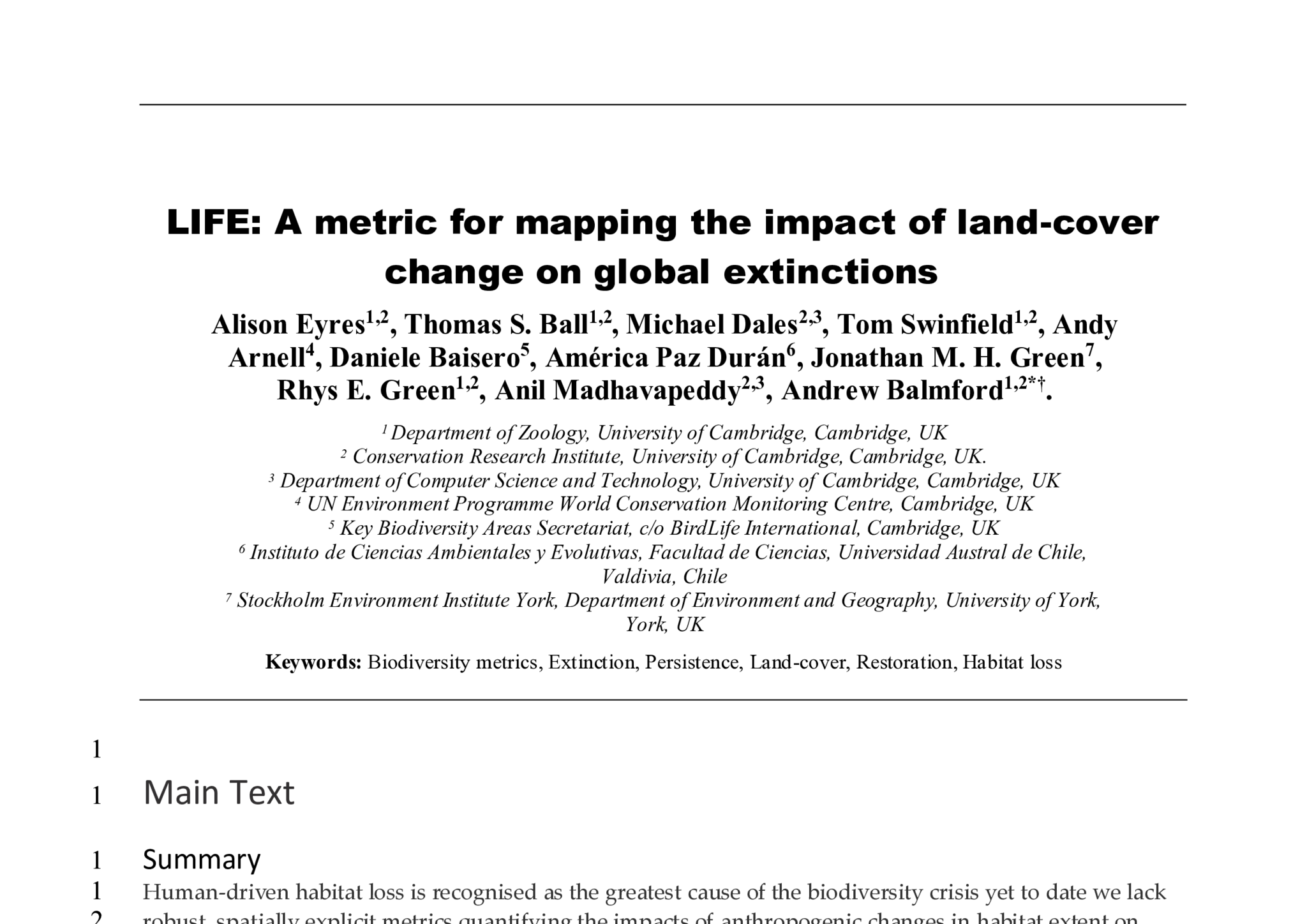LIFE: A metric for mapping the impact of land-cover change on global extinctions
Alison Eyres, Thomas Ball, Michael Dales, Thomas Swinfield, Andy Arnell, Daniele Baisero, América Paz Durán, Jonathan Green, Rhys Green, Anil Madhavapeddy, and Andrew Balmford.
Journal paper in Phil. Transactions of the Royal Society (vol 380 issue 1917).
Human-driven habitat loss is recognized as the greatest cause of the biodiversity crisis, yet to date we lack robust, spatially explicit metrics quantifying the impacts of anthropogenic changes in habitat extent on species’ extinctions. Existing metrics either fail to consider species identity or focus solely on recent habitat losses. The recent "persistence score" approach represented an important development by combining species’ ecologies and land-cover data while considering the cumulative and non-linear impact of past habitat loss on species’ probability of extinction. However, it is computationally demanding, limiting its global use and application.
Here we couple the persistence score approach with high-performance computing to generate global maps of what we term the LIFE (Land-cover change Impacts on Future Extinctions) metric for 30875 species of terrestrial vertebrates at 1 arc-min resolution (3.4 km2 at the equator). These maps provide quantitative estimates, for the first time, of the marginal changes in the expected number of extinctions (both increases and decreases) caused by converting remaining natural vegetation to agriculture, and restoring farmland to natural habitat.
We demonstrate statistically that this approach integrates information on species richness, endemism and past habitat loss. Our resulting maps can be used at scales from 0.5–1000 km2 and offer unprecedented opportunities to estimate the impact on extinctions of diverse actions that affect change in land cover, from individual dietary choices through to global protected area development.
Older versions
There are earlier revisions of this paper available below for historical reasons. Please cite the latest version of the paper above instead of these.
This is v5 of the publication from Jul 2024.
LIFE: A metric for quantitatively mapping the impact of land-cover change on global extinctions
Alison Eyres, Thomas Ball, Michael Dales, Thomas Swinfield, Andy Arnell, Daniele Baisero, América Paz Durán, Jonathan Green, Rhys Green, Anil Madhavapeddy, and Andrew Balmford.
Working paper at Cambridge Open Engage.
This is v4 of the publication from May 2024.
LIFE: A metric for quantitatively mapping the impact of land-cover change on global extinctions
Alison Eyres, Thomas Ball, Michael Dales, Thomas Swinfield, Andy Arnell, Daniele Baisero, América Paz Durán, Jonathan Green, Rhys Green, Anil Madhavapeddy, and Andrew Balmford.
Working paper at Cambridge Open Engage.
This is v2 of the publication from Dec 2023.
This is v1 of the publication from Nov 2023.
